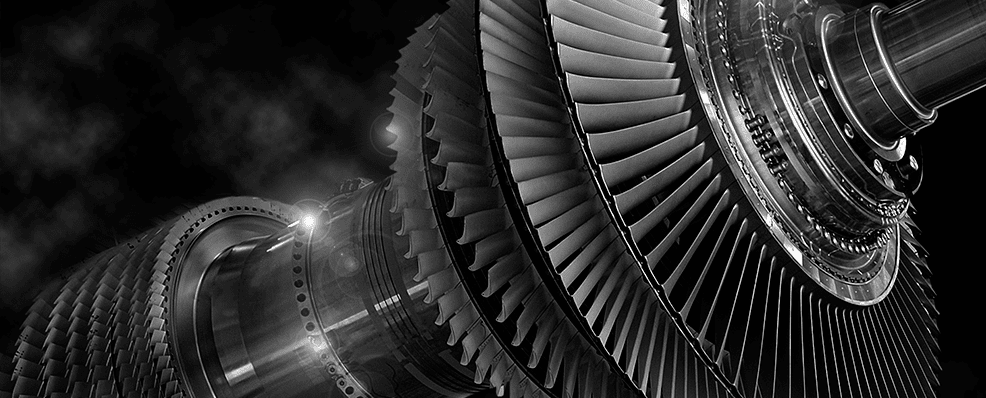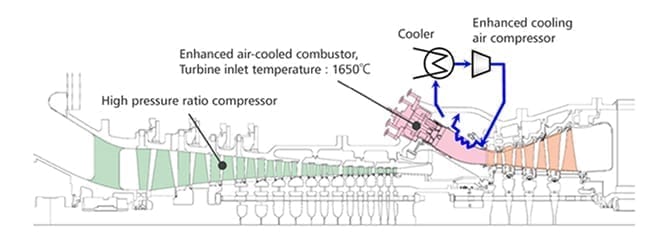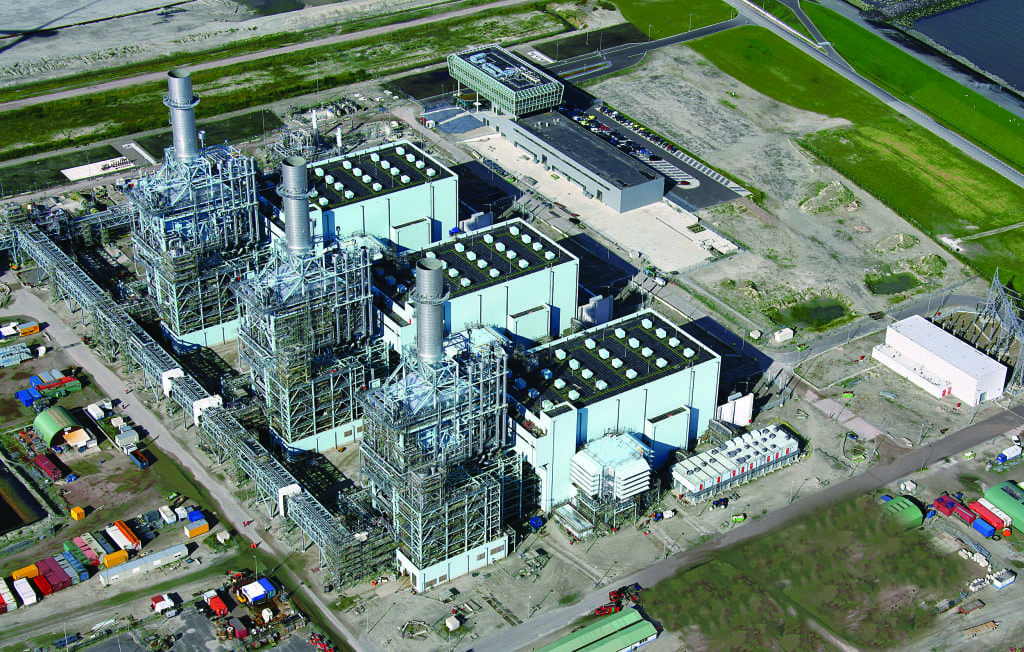MHPS Secures First Order for Hydrogen-Capable J-Series Gas Turbines
The post MHPS Secures First Order for Hydrogen-Capable J-Series Gas Turbines appeared first on POWER Magazine.
Mitsubishi Hitachi Power Systems (MHPS) has bagged an order for the first advanced-class gas turbines designed to transition to renewable hydrogen fuel from Utah's state-owned Intermountain Power Agency (IPA).
MHPS's Lake Mary, Florida-based subsidiary MHPS Americas (MHPSA) on March 10 said that the contract for two M501JAC power trains are the first in the industry "specifically designed and purchased as part of a comprehensive plan to sequentially transition from coal, to natural gas and finally to renewable hydrogen fuel, and creates a roadmap for the global industry to follow."
The advanced J-series turbines-rated at 420 MW (in simple cycle at ISO conditions)-are slated to come online starting in 2025 to replace two 1986-completed coal-fired units at the 1,800-MW Intermountain Power Project (IPP) in Millard County, which lies in the Great Basin region of western Utah.
The existing IPP plant is today owned by IPA, an agency established by Utah state law in 1977 and today comprises 23 Utah electric utility-owning municipalities. The coal units transmit 75% of their power through a 500-kV high-voltage direct current (HVDC) line to Southern California (mainly to the Los Angeles Department of Water and Power [LADWP]) under power sales contracts that are set to expire in June 2027. But because IPA could not secure new buyers for the power beyond that date, the agency in 2017 announced it would shutter both units by 2025 and replace them with an 840-MW facility.
IPA will own and LADWP will operate the new re-powered facility, and it will serve Los Angeles and municipalities in California and Utah. A key reason that the entities partnered with MHPS for the new facility was to keep to California's ambitions to eliminate fossil fuels from its energy sector by 2045, Martin L. Adams, LADWP's general manager and chief engineer, explained to POWER on Tuesday.
"Our goal for IPP is to transition to 100% renewable power no later than 2045, while continuing to provide our customers with safe, sustainable, affordable and reliable electricity," he said. As envisioned, the new IPP facility "will provide renewable power capacity when we need it, and will also provide critical spinning inertia to maintain the reliability of the HVDC transmission line," which has a 2.4-GW capacity and currently also connects with about 400 MW of wind power. "We believe renewable hydrogen is an essential technology for LADWP to achieve a 100% renewable power grid," Adams added.
IPA General Manager Dan Eldredge echoed these points, noting that the project will boost IPA's mission to provide affordable, reliable power with a future vision of becoming a net-zero carbon energy resource. "The unique Intermountain Power Project site and existing regional energy infrastructure provide an ideal opportunity for accomplishing this mission," he said.
An Industry First with a Long-Term VisionUnder the contract announced on Tuesday, MHPS will supply two 1-on-1 M501JAC power trains with gas turbines, steam turbines, heat recovery steam generators, and auxiliary equipment. MHPS will also service the plant under a 20-year long-term service agreement.
As MHPSA President and CEO Paul Browning told POWERon Tuesday, the M501JAC gas turbine is the company's "latest and greatest" J-series air-cooled (JAC) model. Building on MHPS's 2011-introduced J-series-which applied steam cooling to the combustor and raised its turbine inlet temperature (TIT) to 1,600C (and efficiency to about 62%)-the JAC series adopts an air-cooled technology first applied to the G-series' GAC line, which has a TIT of 1,500C. The JAC model essentially has the same compressor flow path and turbine shape as the J-series, but it features an optimized cooling structure for the blades and vanes and a "64% combined cycle efficiency," which makes it well-suited to an eventual conversion to 100% hydrogen, Browning said. "Hydrogen is going to be a more expensive fuel, so you want to have the highest efficiency possible," he said. As significantly, it adopts the J-series' verified dry low-NOx (DLN) technology, which is important, because combustion of hydrogen can produce high NOx emissions and compromise efficiency.
 MHPS's J-series gas turbines are an integration of the G-series and elemental technologies for temperature increase as a result of the Japanese national project for the development of 1,700C class gas turbines. They operate at a turbine inlet temperature of 1,600C. The M501JAC Series gas turbines adopt air-cooling for combustors instead of steam cooling. "With a performance equivalent to the M501J Series gas turbines, they produce a high level of operability including a shorter start-up time," MHPS says. Courtesy: MHPS
MHPS's J-series gas turbines are an integration of the G-series and elemental technologies for temperature increase as a result of the Japanese national project for the development of 1,700C class gas turbines. They operate at a turbine inlet temperature of 1,600C. The M501JAC Series gas turbines adopt air-cooling for combustors instead of steam cooling. "With a performance equivalent to the M501J Series gas turbines, they produce a high level of operability including a shorter start-up time," MHPS says. Courtesy: MHPSWhen the M501JAC units come online at IPP in 2025, they will be "commercially guaranteed" to be able to combust a mix of 30% hydrogen and 70% natural gas starting in 2025, Browning said. "This project at [commercial operation date (COD)] will actually have the same combustion technology that any other of our gas turbines have, which is capable of burning 30% hydrogen," he said. "And so, that's what we've guaranteed at COD."
Between 2025 and 2045, the fuel mixture will then be "systematically increased" to 100% renewable hydrogen, but MHPS is still currently developing a combustion technology that will be capable of firing 100% hydrogen fuel, he noted. "That will be retrofitted at a future date, but the only change would be to the combustion section."
To accommodate the retrofit, and to tamp down costs, MHPS plans to deliver the project in 2025 ready for minimal changes. "So, just for example, the turbine enclosure housing, we're sizing it to be able to fit larger piping in the future. If you built it just for natural gas and then you had to tear it down and rebuild it just a little bit bigger in the future, that would be very expensive. We've worked with the customer and we're all under agreement that things that are a small expense now and avoid a large expense later, we're going to do upfront. But then, some of the things, for example, actually installing the stainless steel piping, we'll wait for the future, when it's actually needed," Browning said.
 Similar to the MHPS's M501GAC combustion system, the M501JAC combustor applies air-cooled stationary combustor components as an enhancement in order to provide more flexibility, faster start-up, lower emissions and higher efficiency. Courtesy: MHPSSetting the Foundation for a Hydrogen Retrofit
Similar to the MHPS's M501GAC combustion system, the M501JAC combustor applies air-cooled stationary combustor components as an enhancement in order to provide more flexibility, faster start-up, lower emissions and higher efficiency. Courtesy: MHPSSetting the Foundation for a Hydrogen RetrofitMHPS is meanwhile making gains in development of its high-hydrogen combustion technology, he said. "Burning hydrogen has two challenges: One, it has a higher flame temperature [than natural gas], and second, it's susceptible to a problem called 'flashback,' [or backfire, caused by a higher flame speed compared to natural gas]," he explained. The company's "completely new combustion technology" will enable not only 100% hydrogen combustion but "also meet the same NOx emissions that our current technology does with natural gas."
The technology, which Browning noted is borrowed from the company's legacy in the rocket launch business, has benefitted from decades of experience, he said. Since 1970, MHPS has fired 29 gas turbine units with hydrogen content ranging between 30% and 90%, tests that have spanned over 3.5 million operating hours. MHPS is also currently working to pilot a project to convert one of three units at Vattenfall's 1.3-GW Magnum combined cycle plant in the Netherlands to renewable hydrogen. That project in Groningen seeks to modify a 440-MW M701F gas turbine and refine the combustion technology "to stay within the same NOx envelope as a natural gas power plant but do it burning 100% hydrogen," without steam or water injection, as Browning told POWER last year.
 The Magnum power plant in the Netherlands, where MHPS has verified that conversion to hydrogen-fired power generation is possible. Courtesy: MHPS
The Magnum power plant in the Netherlands, where MHPS has verified that conversion to hydrogen-fired power generation is possible. Courtesy: MHPSOn Tuesday, he said the ongoing project in the Netherlands is now slated to achieve commercial operation in 2024, noting he is "very confident that project is going to be completed on schedule." The project, he noted, requires modification of MHPS's F-class technology, which "has an older combustion technology that's not our latest DLN combustion technology." It's an important project nonetheless because "we're going to demonstrate that we can convert an existing power plant to hydrogen," he said.
Asked when the combustion technology would be ready for retrofit at the IPP project, Browning declined to disclose a timeline because it was "highly proprietary and competitive" information. He noted, however, that LADWP was targeting a 2045 date to comply with California law, and "we're hoping to be ready-well before that."
He also declined to reveal whether MHPS offered a premium price for the hydrogen capability at the IPP project. But he added: "What I can tell you is that the pricing for our JAC gas turbine capable of hydrogen combustion is very similar to the pricing of a natural gas-only turbine, and the reason is, at COD, it's actually the same turbine. The same turbine that can use 100% natural gas fuel is the same turbine that is capable of using 30% hydrogen and 70% natural gas. There is a small cost increase for the overall plant, and that's simply because the hydrogen molecule is less dense than the methane molecule." That aspect, for example, required that piping needed to be a bit larger and made of stainless steel instead of carbon steel. "And so, that does drive some additional expense, but it's very modest," he said.
Asked about the overall economics of the hydrogen project in light of recent projections by the Hydrogen Council-a CEO-led advisory body of which MHPS's parent company Mitsubishi Heavy Industries is a supporting member-that the eventual costs of renewable hydrogen matter, Browning said that while IPA has not yet contracted a hydrogen supplier, MHPS was developing the project "with every expectation that we will be the gas supplier" for the new IPP facility.
A Boost for the Advanced Clean Energy Storage ProjectLast May, Browning noted, MHPS announced an initiative with Magnum Development, the owner of a large and geographically rare underground salt dome in Utah, to develop the massive Advanced Clean Energy Storage (ACES) project, which is strategically located near the new IPP facility. The companies last year signed a memorandum of understanding (MoU) to develop the $1 billion power-to-gas project in Millard County, Utah, that could store up to 1,000 MW of renewable energy as hydrogen gas year-round and provide it to variability-challenged Western power markets. MHPS told POWER last year that the ACES project will comprise a series of facilities above and within the Magnum Salt Dome, where five salt caverns are already in operation for liquid fuels storage.
 MHPS is developing the massive Advanced Clean Energy Storage (ACES) project in Central Utah, a project it envisions could be "the world's largest energy storage project." Courtesy: MHPS
MHPS is developing the massive Advanced Clean Energy Storage (ACES) project in Central Utah, a project it envisions could be "the world's largest energy storage project." Courtesy: MHPSBrowning confirmed on Tuesday that MHPS is continuing to develop the project, recently launching a front-end engineering study (FEED) to determine its viability. If completed as planned, the project could source surplus (and otherwise curtailed) renewable power from California via existing HVDC infrastructure, convert it into renewable hydrogen through electrolysis, and reconvert it to power by burning it in a 100%-hydrogen gas turbine-essentially creating an energy storage system that can store energy 24/7 year-round, and flexibly dispatch as much as 1,000 MW at grid-scale to balance regional power supply variability.
As the company explained in a March 10 press release, under the ACES project: "The hydrogen will be stored in an underground salt dome at the site, using technology that has been in operation for the past 30 years to supply hydrogen to U.S. refineries in the Gulf Coast of the United States." For now, however, along with conducting the FEED study, MHPS is still in discussion with existing electrolyzer suppliers to secure enough hydrogen supplies for what could become the first-of-its-kind large-scale power-to-gas-to-power project.
But the quest could pose a major constraint: "The entire electrolysis industry today is less than 100 MW per year," noted Browning on Tuesday, "and for [the ACES] project, we're talking about 1 GW of electrolysis. So it's massively scaled versus what they're doing today. The discussions we're having with them is, 'how can we dramatically reduce the cost of electrolysis using economies of scale?'"
Finding a Foothold in a Flourishing IndustryStill, if viewed from a long-term perspective, the prospect of a centralized energy storage facility is especially promising, Browning said, which makes the project a key part of the company's mission to provide both power generation and storage solutions that will help its customers combat climate change and advance human prosperity. And it's just one part of MHPS's larger global strategy to leverage hydrogen's potential and cement the company's place in a hydrogen economy. "We're putting in place a critical piece of infrastructure that's going to be able to supply massive amounts of renewable hydrogen [that could lead to a lot of other developments] including in the transportation industry and also for industrial uses," he said.
The prospect of producing power with hydrogen is just as lucrative, owing mainly to the inherent flexibility it offers, Browning suggested. "One thing that's really interesting about this is when you're using natural gas in a combined cycle power plant, you're a power generation facility, but when you're using hydrogen in the same facility, you're actually an energy storage facility. So it's really well-suited to help customers go through that transition," he said. "It can do what you need to have done today, and it can also do what you need to have done tomorrow."
For now, "Globally, we've got really a lot of different kinds of projects, and the reason is that we want to demonstrate that we have the capability to turn any fuel into hydrogen and do it in a zero-carbon kind of way," he said. "Also, then we can use existing technology, we can use our newest technology, we can store hydrogen, we can transport hydrogen. We want to be able to figure that entire ecosystem out because different customers in different regions of the world are going to need different solutions. Beyond the IPP, Netherlands, and ACES project, for example, MHPS is exploring a coal gasification technology in Australia that could convert coal into hydrogen and capturing and storing the carbon dioxide that is produced, Browning said
"And so, we have really high hopes that this is really the beginning of something that's going to be much bigger," he said.
-Sonal Patelis a POWER senior associate editor (@sonalcpatel, @POWERmagazine)
Updated (March 11): Adds details from March 10 interview with MHPSA President and CEO Paul Browning.
The post MHPS Secures First Order for Hydrogen-Capable J-Series Gas Turbines appeared first on POWER Magazine.